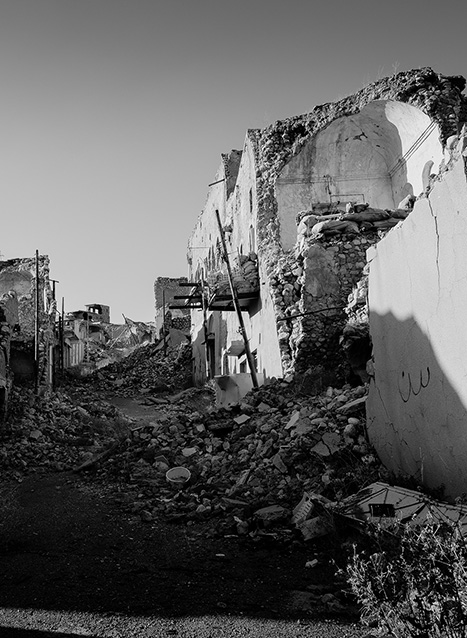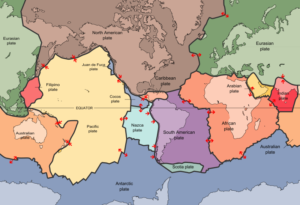Evacuations from Israel and High-Risk Locations Call +44 (0)1202 308810 or Contact Us →

Deadly Earthquake Hits Osaka, Japan
18 Jun 2018
A child and two elderly men have been killed after a 6.1-magnitude earthquake struck the Japanese city of Osaka at around 0800hrs local time on 18 June 2018. Nearly 350 people have been confirmed to have suffered injuries. No tsunami warning has been issued and there has been no disruption to activities at nuclear power plants in the region, allaying fears of a situation similar to the 2011 Fukushima Daiichi nuclear disaster. A disruption to transport has been reported with trains in western Japan initially being suspended at 1130hrs local time. Shinkansen bullet train services were also cancelled but have since continued with delays and disruption. Local lines were also affected largely in Osaka, Kyoto, Nara, Hyogo and Shiga prefectures. Damage has been reported to buildings and roads in Osaka, Hyogo, and Nara Prefectures. Flights have been disrupted at Osaka Airport due to damage at the terminal building. More than 1,300 people have been evacuated in Osaka and more than 100,000 are without power or water in the northern half of the prefecture. Takatsuki city was the area most severely hit.
Key Points
- Three people have been killed and hundreds injured after a 6.1-magnitude earthquake struck Japan on 18 June 2018.
- The earthquake hit the prefecture of Osaka, but no tsunami warning has been issued and nuclear power plants in the area are operating normally.
- Transport disruption was reported in the quake’s aftermath.
Situational Summary
Environmental: A child and two elderly men have been killed after a 6.1-magnitude earthquake struck the Japanese city of Osaka at around 0800hrs local time on 18 June 2018. Nearly 350 people have been confirmed to have suffered injuries. No tsunami warning has been issued and there has been no disruption to activities at nuclear power plants in the region, allaying fears of a situation similar to the 2011 Fukushima Daiichi nuclear disaster. A disruption to transport has been reported with trains in western Japan initially being suspended at 1130hrs local time. Shinkansen bullet train services were also cancelled but have since continued with delays and disruption. Local lines were also affected largely in Osaka, Kyoto, Nara, Hyogo and Shiga prefectures. Damage has been reported to buildings and roads in Osaka, Hyogo, and Nara Prefectures. Flights have been disrupted at Osaka Airport due to damage at the terminal building. More than 1,300 people have been evacuated in Osaka and more than 100,000 are without power or water in the northern half of the prefecture. Takatsuki city was the area most severely hit.
Further aftershocks larger than 1.0-magnitude have been reported after the initial quake. Authorities in Japan estimate that there is a 10 to 20 per cent chance of another quake of a similar magnitude in the same area in the coming days. The impact of the quake may be increased due to inclement weather conditions hitting Japan including typhoons, with landslides a possibility. Indeed, Typhoon Gaemi brought record rains to Okinawa, and caused numerous injuries, after making landfall on 16 June.
Solace Global Comment
Japan sits at the crossroads of three tectonic plates in a highly active seismic zone known as the Pacific Ocean ‘Ring of Fire’. It is estimated that 90 per cent of all of the world’s earthquakes occur in this area. As many as 500,000 earthquakes occur every year globally, with 100,000 noticeable to humans. In certain places, minor earthquakes occur almost constantly. Most earthquakes are natural occurrences, but human development has had an impact. The construction of dams and the impact of fracking for gas are thought to cause earthquakes or at least increase their impact. It has been estimated that on average, there are 18 major earthquakes every year (those registering 7.0-7.9 on the Richter Scale) and one great earthquake (those register 8.0 and above). In 2017, only seven earthquakes were recorded above 7.0 magnitude on the Richter Scale worldwide. Unlike volcanoes or tropical storms, it is presently impossible to predict when an earthquake will occur.

SECURITY ADVICE
EnvironmentModerateWhat to Expect:
Small to Moderate Earthquakes
Seismic movements which are lower on the Richter Scale can occur across the world, including in places like the United Kingdom, which is not on or near a major fault line. These earthquakes do not represent a disaster risk. When such quakes occur, you can expect:
Large Earthquakes
The impact of larger earthquakes, which includes everything from 5.0 on the Richter Scale, largely depends on where they occur and at what depth. Their impact may be felt for several minutes. However, in general, when they do occur, you can expect the following.
If you are inside:
The first thing to do when feeling an earthquake tremor is to drop to your hands and knees so the earthquake does not knock you down. You should then cover your head and neck with your arms as protection from falling debris.
You should then look for cover. If you can move safely; a sturdy table is suitable, hold on to the legs so that it stays over you to offer protection from falling objects. If this is not available, crawl away from outside walls and next to inside walls away from windows or any fixtures or furniture which could fall on you. Remember: drop, cover, and hold on
If you are in bed when the earthquake occurs, you should stay in bed and cover your head and neck with a pillow unless there is something overhead that could fall on you and cause injury. At night, it is difficult to see any hazards or debris which have emerged and attempting movement in the darkness may result in further injuries.
If you are in a lift, get off at the next available floor and find cover.
Stay inside, do not rush to get outside and await the end of the tremors.
If you are outside:
If you are outside when shaking occurs, get to open space away from buildings, street lights, bridges/flyovers and overhead wires. Once in the open, you should drop, cover, and hold on. Then await the end of tremors.
If you are in a moving vehicle:
If driving when tremors begin, stop as quickly and safely as you can and apply the handbrake. Be aware of areas of potential landslides. Avoid stopping near buildings, trees, bridges, overpasses, and overhead wires. Once the earthquake tremors cease, proceed cautiously, avoid roads, bridges, and other infrastructure which may have been damaged by the earthquake.
If you are trapped:
If the worst happens and you become trapped it is important to remain calm and not move about or kick up dust. If you have a phone, try to use it to call for help. If possible, try tapping on a pipe or use a whistle so rescuers can locate you. Shouting should be a final measure taken as it is important to not inhale too much dust and debris.
If you are not trapped when tremors stop:
When shaking stops, leave the building if it is safe to do so and get to an open space away from any damaged areas.
If the building is undamaged, check for the smell of gas, turn it off at the main valve. If wiring is damaged turn that off at the main switchboard. Check for fires and evacuate the building if they are many or too large to safely extinguish.
Monitor local media through any means for information and instruction.
Check for any injuries and give treatment (provided you are trained to do so). Then assist with rescues if it is safe to do so.
Be prepared for a tsunami in coastal areas, learn if the area you are in is usually impacted by post-earthquake tsunamis. A strong earthquake that lasts more than 20 seconds in a tsunami zone will mean evacuation is imperative. If this is the case, once shaking has stopped, move inland and to higher ground immediately and continue to monitor for local instruction or evacuations. If you can see the waves you are still too close. Remain on high ground, tsunami waves can last up to eight hours or longer, only return when officials say it is safe to do so.
Maintain extreme caution in post-earthquake clean-up. Do not remove heavy debris alone and remember to use appropriate clothing and tools.
Be ready for aftershocks and be prepared to drop, cover, and hold on, should they occur.
Most earthquake-related injuries are caused by collapsing walls, objects falling, or glass shattering, rather than ground vibrations directly causing injury.
For those in Japan, it is strongly advised to follow the advice of local officials as rescue and rebuilding work takes place. It is also recommended that offices and other buildings in the region undergo detailed security assessments to include a seismic risk assessment. An earthquake plan should be put into place and all staff trained in what to do should one occur. It should also be noted that building foundations may be damaged by this most recent quake and any further significant seismic activity may cause deadly infrastructural impairment.
For most travel to Japan, Solace Global would not advise clients of the need to employ enhanced security measures. Travellers should consider the use of travel-tracking technology with an intelligence feed. This should enable a traveller to be alerted of any security updates within their vicinity and to update others of their movements in case of an emergency.